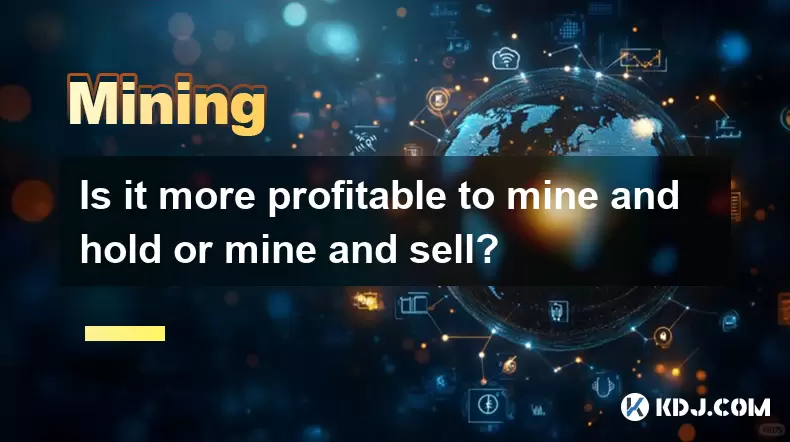-
 Bitcoin
Bitcoin $120400
1.77% -
 Ethereum
Ethereum $3615
7.90% -
 XRP
XRP $3.580
17.84% -
 Tether USDt
Tether USDt $1.001
0.06% -
 BNB
BNB $729.4
1.25% -
 Solana
Solana $179.9
5.04% -
 USDC
USDC $0.0000
0.01% -
 Dogecoin
Dogecoin $0.2311
8.22% -
 TRON
TRON $0.3226
4.04% -
 Cardano
Cardano $0.8490
12.85% -
 Hyperliquid
Hyperliquid $46.45
0.72% -
 Stellar
Stellar $0.4913
8.54% -
 Sui
Sui $4.027
2.00% -
 Chainlink
Chainlink $18.51
11.67% -
 Hedera
Hedera $0.2818
21.51% -
 Avalanche
Avalanche $24.03
7.40% -
 Bitcoin Cash
Bitcoin Cash $508.5
2.90% -
 Shiba Inu
Shiba Inu $0.00001496
3.24% -
 UNUS SED LEO
UNUS SED LEO $8.961
1.83% -
 Toncoin
Toncoin $3.264
3.13% -
 Litecoin
Litecoin $104.6
8.15% -
 Polkadot
Polkadot $4.389
6.11% -
 Uniswap
Uniswap $9.924
10.63% -
 Monero
Monero $337.9
0.49% -
 Pepe
Pepe $0.00001376
2.79% -
 Bitget Token
Bitget Token $4.830
2.46% -
 Ethena USDe
Ethena USDe $1.001
0.05% -
 Dai
Dai $1.000
0.02% -
 Aave
Aave $325.2
1.66% -
 Bittensor
Bittensor $423.7
-0.85%
Is it more profitable to mine and hold or mine and sell?
Cryptocurrency miners choose between holding mined coins for potential gains or selling immediately to mitigate risk, with strategies influenced by market conditions, operational costs, and long-term financial goals.
Jul 13, 2025 at 03:14 am

Understanding the Two Primary Mining Strategies
When it comes to cryptocurrency mining, there are two primary strategies that miners consider: mining and holding or mining and selling. Each approach has its own set of advantages and disadvantages depending on market conditions, individual risk tolerance, and long-term financial goals.
Mining and holding refers to the practice of retaining the mined coins instead of immediately converting them into fiat currency or stablecoins. This strategy is often adopted by those who believe in the future value appreciation of the asset they're mining. On the other hand, mining and selling involves converting mined coins into more stable assets as soon as possible to mitigate price volatility risks.
Profitability Factors in Mining and Holding
Several factors influence the profitability of holding mined coins:
- Market Volatility: Cryptocurrencies are known for their high volatility. If the price of the coin increases significantly after mining, holding can result in substantial profits.
- Long-Term Belief in the Project: Miners who strongly believe in the technology and adoption potential of a particular blockchain may prefer to hold their mined coins.
- Transaction Fees Avoidance: By not converting mined coins immediately, miners avoid paying transaction fees multiple times, which can add up over time.
- Tax Implications: Depending on jurisdiction, holding mined coins may have different tax treatments compared to regular income from immediate sales.
However, this strategy also carries significant risk. If the price drops, miners could end up with less real-world value than if they had sold immediately.
Profitability Factors in Mining and Selling
Conversely, the mining and selling approach offers several benefits:
- Price Risk Mitigation: The most compelling reason to sell immediately is to lock in earnings at the current market rate, avoiding potential losses from price drops.
- Operational Cost Coverage: Mining requires upfront costs such as electricity, hardware, and maintenance. Selling mined coins allows miners to cover ongoing expenses without relying on future price movements.
- Stable Income Stream: For miners looking to generate consistent income, selling mined coins provides predictable cash flow, which is especially important in bear markets.
- Diversification Opportunities: Proceeds from immediate sales can be used to invest in other assets, potentially leading to better overall portfolio performance.
This method appeals to more conservative investors or those who treat mining strictly as a business rather than an investment play.
Impact of Market Conditions on Strategy Selection
Market dynamics play a crucial role in determining which strategy might be more profitable at any given time:
- In bull markets, holding mined coins can lead to exponential gains if the miner correctly identifies a rising asset.
- During bear markets, selling mined coins may be safer since prices are generally declining across the board.
- Halving events can shift the balance, as reduced block rewards may make holding more strategic due to scarcity expectations.
- Macroeconomic factors like inflation, interest rates, and regulatory news also influence whether holding or selling is more advantageous.
Miners must continuously monitor these conditions and adjust their strategy accordingly.
Operational Considerations for Implementation
Implementing either strategy requires technical and logistical preparation:
- Wallet Setup: Whether holding or selling, miners need secure wallets to receive mined coins. Cold storage is recommended for long-term holdings.
- Exchange Integration: Those opting to sell should have accounts on reliable exchanges with low trading fees and good liquidity for the mined asset.
- Automated Selling Tools: Some platforms allow automatic conversion of mined coins to fiat or stablecoins upon receipt, helping enforce the mining and selling discipline.
- Tracking and Accounting: Both strategies require accurate tracking of mined amounts, sale proceeds, and cost basis for tax purposes.
These steps ensure that whichever strategy is chosen, it can be executed efficiently and securely.
Risk Management in Mining Strategies
Risk management is essential regardless of the chosen strategy:
- Dollar-Cost Averaging (DCA): Instead of selling all mined coins at once, some miners use DCA to spread out sales and reduce exposure to short-term volatility.
- Portfolio Allocation: Holding too much of one mined asset can expose miners to concentrated risk. Diversifying through sales helps maintain a balanced portfolio.
- Emergency Reserves: Miners who hold should maintain a reserve of stable assets to cover unexpected expenses without needing to liquidate during downturns.
- Insurance and Security Measures: Whether holding or selling, protecting digital assets against theft or loss is critical.
By incorporating these practices, miners can better protect themselves against unpredictable market swings.
Frequently Asked Questions
What are the tax implications of mining and holding versus mining and selling?
In many jurisdictions, mined coins are treated as taxable income at the time of receipt. Holding does not defer taxes but may qualify for capital gains treatment upon eventual sale. Selling immediately typically results in ordinary income taxation.
Can I switch between mining and holding and mining and selling based on market conditions?
Yes, many miners adopt a hybrid approach, holding a portion while selling another percentage based on market trends, personal conviction, and financial needs.
How do mining pools affect the decision to hold or sell?
Mining pools distribute rewards more frequently, which can encourage selling for immediate income. However, pool participants still retain the option to hold distributed coins if desired.
Is it possible to automate the mining and selling process?
Yes, certain platforms and scripts allow automatic transfer of mined coins to exchanges where they can be converted into stablecoins or fiat automatically.
Disclaimer:info@kdj.com
The information provided is not trading advice. kdj.com does not assume any responsibility for any investments made based on the information provided in this article. Cryptocurrencies are highly volatile and it is highly recommended that you invest with caution after thorough research!
If you believe that the content used on this website infringes your copyright, please contact us immediately (info@kdj.com) and we will delete it promptly.
- XRP, Dogecoin, and Crypto Bills: What's Shaking in the Crypto World?
- 2025-07-18 20:50:13
- Trump, Family Business, and Power: A New Era of Conflicts?
- 2025-07-18 20:30:12
- Trump, Business, & Bitcoin: A Crypto Capitalist's Vision
- 2025-07-18 20:40:12
- MEXC's Q2 Domination: Riding the Crypto Wave to Market Leadership
- 2025-07-18 18:30:12
- Caldera (ERA) Takes Flight: Binance Listing Ignites Crypto Surge
- 2025-07-18 19:10:13
- Hex Trust and Algorand: Institutional Staking Rewards Take Center Stage
- 2025-07-18 19:50:13
Related knowledge

How are crypto mining profits taxed?
Jul 14,2025 at 12:28am
Understanding Cryptocurrency Mining and TaxationCryptocurrency mining involves validating transactions on a blockchain network and earning rewards in ...

How to keep a mining rig cool
Jul 12,2025 at 01:42pm
Understanding the Importance of Cooling in Mining RigsCryptocurrency mining is an intensive process that places heavy demand on hardware components, p...

How to mine crypto on a gaming PC
Jul 16,2025 at 12:00pm
What is Crypto Mining on a Gaming PC?Crypto mining involves using your computer's processing power to validate transactions on a blockchain network. A...

How to set up a crypto miner
Jul 16,2025 at 09:14am
Understanding Ethereum Gas Fees: What Are They and How Do They Work?Ethereum gas fees are a fundamental aspect of the network, representing the cost r...

Can you mine crypto on a laptop?
Jul 16,2025 at 02:21am
Is It Feasible to Mine Cryptocurrency on a Laptop?Mining cryptocurrency on a laptop is technically possible, but feasibility depends heavily on the ha...

Is crypto mining worth it?
Jul 16,2025 at 01:21am
Understanding the Basics of Crypto MiningCrypto mining refers to the process of validating transactions on a blockchain network by solving complex mat...

How are crypto mining profits taxed?
Jul 14,2025 at 12:28am
Understanding Cryptocurrency Mining and TaxationCryptocurrency mining involves validating transactions on a blockchain network and earning rewards in ...

How to keep a mining rig cool
Jul 12,2025 at 01:42pm
Understanding the Importance of Cooling in Mining RigsCryptocurrency mining is an intensive process that places heavy demand on hardware components, p...

How to mine crypto on a gaming PC
Jul 16,2025 at 12:00pm
What is Crypto Mining on a Gaming PC?Crypto mining involves using your computer's processing power to validate transactions on a blockchain network. A...

How to set up a crypto miner
Jul 16,2025 at 09:14am
Understanding Ethereum Gas Fees: What Are They and How Do They Work?Ethereum gas fees are a fundamental aspect of the network, representing the cost r...

Can you mine crypto on a laptop?
Jul 16,2025 at 02:21am
Is It Feasible to Mine Cryptocurrency on a Laptop?Mining cryptocurrency on a laptop is technically possible, but feasibility depends heavily on the ha...

Is crypto mining worth it?
Jul 16,2025 at 01:21am
Understanding the Basics of Crypto MiningCrypto mining refers to the process of validating transactions on a blockchain network by solving complex mat...
See all articles

























































































